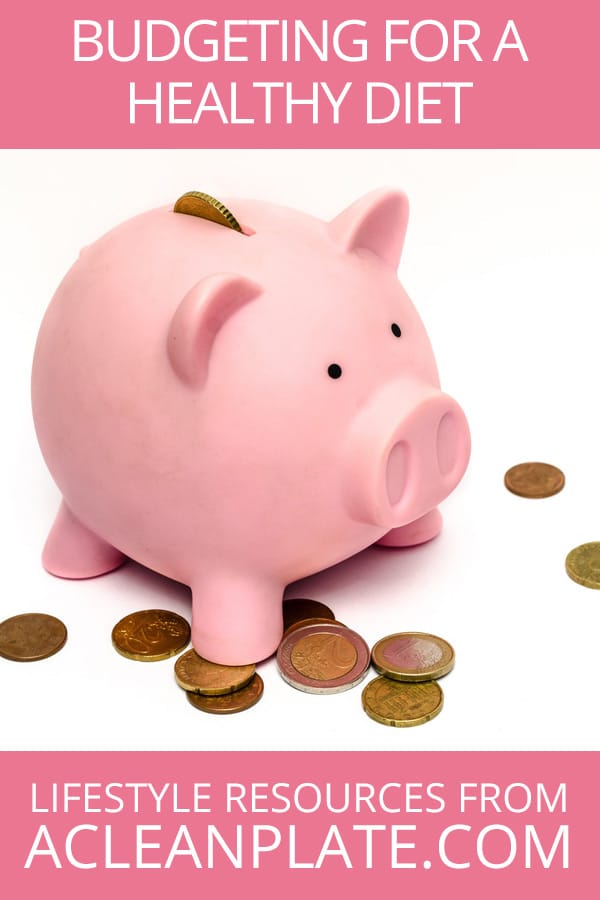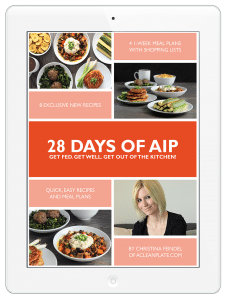Budgeting for a Healthy Diet

One of the most common things I hear from people I talk to about diet change is this:
“I’d eat healthy if I could afford to.”
We’ve all probably said the same thing at some point in our lives. When you live on five-dollar family-sized pizzas, the thought of spending the same amount of money on a meager pound of beef can feel daunting.
But contrary to popular expectation, food you cook at home is almost always cheaper than processed foods at the store–in part because it’s more nutrient dense, so you wind up eating less.
Here are my top tips for saving money on a healthy diet.
1. Spend less money on eating out.
Restaurants are a luxury. You’ll pay more for the time and convenience than you do for the food and sometimes, the markup is worth it. Certainly it’s nice to treat ourselves on special occasions. But if saving money is truly important, the vast majority of your meals should be cooked at home.
2. Buy your pantry staples in bulk.
Things you use a lot of are often cheaper to buy in large quantities. Herbs are a prime example. Those little bottles in the spice aisle are pretty darn expensive per ounce, but if you check out the bulk goods aisle, you can often get twice the amount for half the price. If your grocery store doesn’t have a bulk section, you may be able to find your favorites online. For ideas, check out my post on AIP pantry staples.
3. Give up coffee, alcohol, soda, and sugar.
These are all things you’ll want to do if you’re serious about eating healthier and it may surprise you how much money you save once they’re gone. You may also be surprised how many of your health problems vanish! My husband recently lost twenty pounds just by giving up beer. And my insomnia and PCOS are way less severe now that I don’t drink coffee or use added sugars.
4. Buy the most nutrient-dense foods available.
When you buy a can of beans, it may be half the price of a pound of chicken–but it’s also got about a quarter of the nutritional value and won’t be as filling because there’s no fat. When you consider the amount of nutrients in a food on a per-dollar basis, fruits and vegetables come out waaaay ahead of other foods and cheap cuts of meat and seafood start to look like a much better value than a carb-filled bag of rice. Where else are you going to get that density of B vitamins and omega-3 fats? Don’t say supplements–those are even more expensive, and they don’t work half as well as actual food.
5. But don’t eat meat at every meal.
Unless you’re an athlete or your doctor has told you to, you probably don’t need a dense source of protein at every meal. A fruit and vegetable salad with homemade dressing can have enough calories and healthy fats to tide you over ’til dinner. You’ll save money and it’s also better for the environment.
6. Buy frozen produce.
You may think frozen isn’t as healthy as fresh, but for most fruits and vegetables, it’s actually healthier! Frozen produce is preserved close to its time of harvest, whereas “fresh” produce may have been sitting in warehouses, trucks, and stores for a while–losing nutrients with each passing day. Especially if frozen produce is cheaper, it’s a perfectly acceptable, healthy buy.
7. Store your food properly and don’t throw anything away.
How many times have you found a mushy avocado or a pint of moldy strawberries at the back of your fridge? The average American family throws out $1,500 worth of food every year. What a waste! Now, if something’s well and truly rotted, it’s unavoidable that it wind up in the bin. But take steps to prevent that from happening in the first place by storing your food properly. Buy only what you know your family will eat between now and the next grocery run and check your fridge daily for food that looks like it’s on its way out. Use or freeze it before it turns! Check out this post for more tips to reduce food waste.
8. Batch cook.
This is my #1 recommendation for saving time and money on a healthy diet. Make large servings of food on the weekend and freeze the leftovers for use throughout the week. Not only will less food go bad, but you’ll have healthy meals to reach for on days you don’t have the time or energy to cook. It’s the only reason I was able to stick to the AIP during my elimination phase while working a full-time job and struggling through my chronic pain. You may not want to take the time for it, but you’ll thank yourself later if you do! I’ve got some batch cooking ideas to get you started.
9. Stick to your shopping list.
Before you go shopping (whether its groceries, clothes, or office supplies), make a list. Only buy items on the list, and look for the cheapest options available. Grocery stores often include the price per ounce on their labels, so you can easily compare your options and choose the cheapest per ounce. You might be surprised to find that the bottle of olive oil or brand of laundry detergent you’ve been using forever isn’t actually the best option.
Looking for more easy AIP recipes?
 I know diet change can feel overwhelming. I started the autoimmune protocol at a time when only four other people were writing about it, and over the years, I’ve striven to give you the resources I wish I’d had when I got started. Not just recipes, but ways to implement them. My first ebook 28 Days of AIP is a meal plan that will help you get going (or get back on the wagon) with as little fuss as possible. With a variety of simple, delicious recipes, plenty of leftovers so you don’t spend all your free time in the kitchen, and shopping lists ready to go, all you have to do is follow the plan, then sit down and enjoy your meal! It’s available as a digital download for $9.99.
I know diet change can feel overwhelming. I started the autoimmune protocol at a time when only four other people were writing about it, and over the years, I’ve striven to give you the resources I wish I’d had when I got started. Not just recipes, but ways to implement them. My first ebook 28 Days of AIP is a meal plan that will help you get going (or get back on the wagon) with as little fuss as possible. With a variety of simple, delicious recipes, plenty of leftovers so you don’t spend all your free time in the kitchen, and shopping lists ready to go, all you have to do is follow the plan, then sit down and enjoy your meal! It’s available as a digital download for $9.99.

Great article, Christina! I’ll be sharing on Facebook. 🙂
Thanks!!! <3
Such a great post, Christina. I especially like the needs hierarchy mention. 🙂
Thanks! Some of my psych schooling stuck. 😉